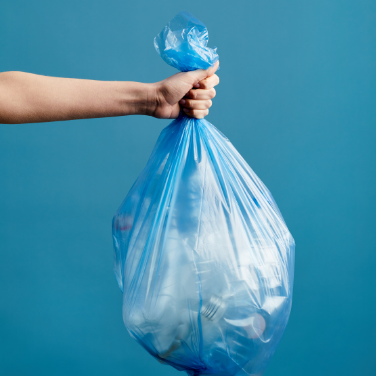Sustainability in the Laboratory: Small Changes Are Adding Up to a Better Tomorrow
How will you effectively reduce waste, space, and costs while minimizing disruption in your laboratory?
You’re under immense pressure to create a safer, healthier, and more productive process for your team, customers, and the environment—all while balancing costs and time. With Whirl-Pak, small changes can add up to help you meet the challenge.
Successfully reduce:
- Plastic waste by 5 to 10x
- Emissions by 5x
- Water used throughout life cycle by 10x
- Space by 95%
- Disposal costs
It’s Time for a Change
Sustainability is a word you hear often today, and companies are spending significant time and effort on this topic. Labs are notorious for using large quantities of plastic consumables and should be included in this discussion. Lab plastics are shatterproof, durable, lightweight, single-use products that can reduce cross contamination. They’re easy to use and almost ubiquitous. Initiating changes in how they’re used in a laboratory setting can be challenging. Standard operating procedures are commonplace, and scientists follow them day in and day out to maintain order and consistency.
Reduce, Reuse, Recycle
Sustainability related to plastic consumables generally defaults to a discussion about recycling. Can products be safely recycled and is this activity convenient? Although important, recycling is not the only option to consider.
Another issue is the amount of plastic we use, which can often be reduced from the start. As a part of its overall waste management strategy, the U.S. EPA developed a Waste Management Hierarchy: source reduction is the most preferred tool, followed by materials reuse, and finally, recycling. Simply put: reduce, reuse, recycle. The order here is important because the greatest impact on sustainability is through reduction in overall use.
Sample Collection Containers Are Leading the Way
One way of reducing overall plastic consumption in the lab is substituting flexible sampling containers for rigid plastic. Whirl-Pak sterilized sampling bags were developed over 60 years ago to transport liquid milk samples to the lab. Today, these flexible packages are preferred in many industries and across more than 75 countries. Not all industries, however, have embraced this sampling format.
One industry ripe for a sampling procedure change is the water industry. Of the hundreds of millions of water samples taken each year, the majority are collected in rigid, single-use plastic containers. On average, these containers use 5 to 10 times the amount of plastic in a comparably sized Whirl-Pak bag. While this more sustainable solution is readily available, initiating change has been difficult.
Evaluating Environmental Impact
Whirl-Pak Filtration Group conducted an evaluation of the environmental impact of using 100 mL and 500 mL sterile sampling bags instead of the rigid plastic containers currently used. The study used Ecolmpact-COMPASS software, which is widely used for life cycle assessments in the packaging industry. A life cycle assessment characterizes the impact associated with sourcing, manufacturing, distributing, using, and disposing of a given product. It gives you an idea of which package may have a lower environmental footprint, allowing you to make better sustainability decisions.
The study compared Whirl-Pak bags made from linear low-density polyethylene (LLDPE) to rigid containers made from polypropylene (PP), polyethylene terephthalate (PET), or high-density polypropylene (HDPE). Environmental impact variables included fossil fuel use, greenhouse gas emissions, and water use. Both sizes of Whirl-Pak bags produced similar results; only results for the 100 mL size are discussed below.
The study assumed that one million containers were shipped a distance of 1,000 km. Data was segregated by material usage, manufacturing, transport, and end of life. In all product comparisons, the Whirl-Pak sterile sampling bags were significantly more sustainable than the three rigid containers commonly used in water collection, including less fossil fuel use, lower greenhouse gas emissions, less water usage, and an overall lower environmental impact throughout the product’s life cycle.
Cost Considerations
Even when a sustainable alternative is identified, cost considerations can affect the decision to implement changes. Budgetary constraints can limit even a highly motivated lab manager. One must consider overall costs and also hidden savings associated with shipping, storage, and waste disposal costs. Savings may be magnified if shipping long distances is required.
A focus on small, yet meaningful changes can make a measurable impact. Replacing rigid plastic sample collection vessels with flexible solutions like Whirl-Pak bags can be the beginning of your journey toward a more sustainable work environment.




